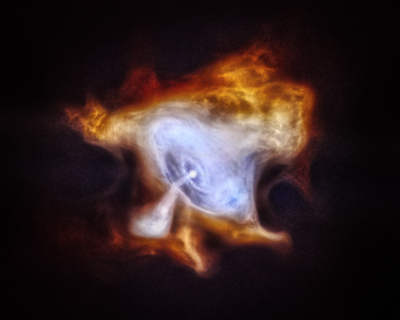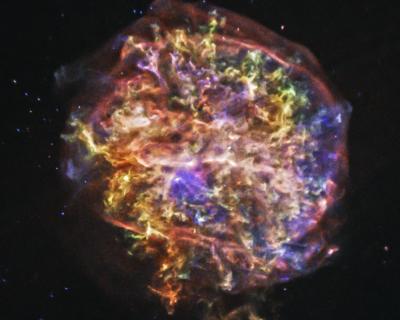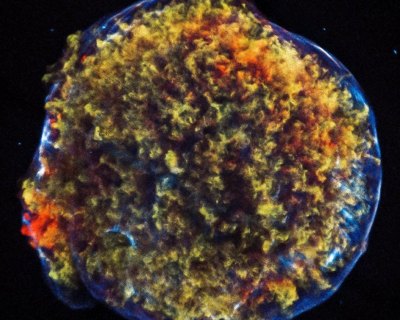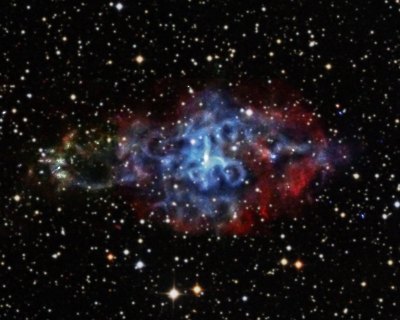Supernova images mark orbiter's anniversary
Tuesday, July 22, 2014 - 12:11
From NASA Reports
Chandra. Or to be specific, NASA’s Chandra X-ray Observatory, a 45-foot-long telescope making an elliptical orbit around Earth and capturing wild images of space in the process.
The orbiter is designed to “detect X-ray emission from very hot regions of the universe such as exploded stars, clusters of galaxies, and matter around black holes,” according to NASA. X-rays are absorbed by Earth's atmosphere, so Chandra orbits high above – about 86,500 miles into space.
The satellite is marking its 15th year in space with these four new images of supernova fragments:
 The Crab Nebula: At the center of the Crab Nebula "is an extremely dense, rapidly rotating neutron star left behind by the explosion,” NASA reports. Image: NASA.
The Crab Nebula: At the center of the Crab Nebula "is an extremely dense, rapidly rotating neutron star left behind by the explosion,” NASA reports. Image: NASA. Supernova Remnant G292.0+1.8: NASA says this is one of three Milky Way supernova remnants containing large amounts of oxygen. Image: NASA.
Supernova Remnant G292.0+1.8: NASA says this is one of three Milky Way supernova remnants containing large amounts of oxygen. Image: NASA. Tycho Supernova Remnant: The supersonic expansion of the exploded star brought "a shock wave moving outward into the surrounding interstellar gas, and another, reverse shock wave moving back into the expanding stellar debris,” NASA reports. Image: NASA.
Tycho Supernova Remnant: The supersonic expansion of the exploded star brought "a shock wave moving outward into the surrounding interstellar gas, and another, reverse shock wave moving back into the expanding stellar debris,” NASA reports. Image: NASA. Supernova Remnant 3C58: This Chandra image shows the center’s rapidly spinning neutron star surrounded by a thick ring, or torus, of X-ray emission, according to NASA. Image: NASA.
Supernova Remnant 3C58: This Chandra image shows the center’s rapidly spinning neutron star surrounded by a thick ring, or torus, of X-ray emission, according to NASA. Image: NASA.

